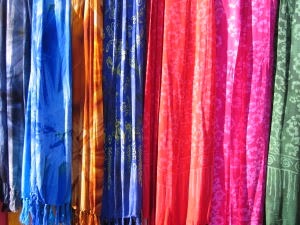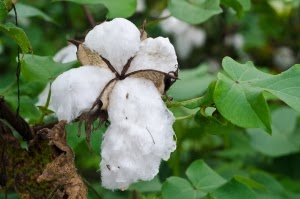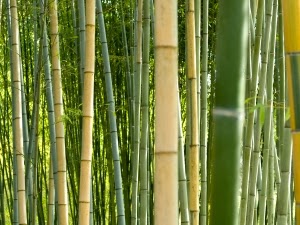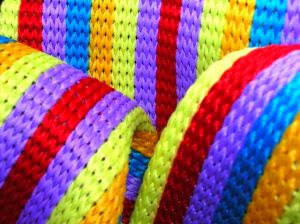
Some companies use the term “natural fabric” for apparel or linens as a means of green-washing products that may be laden with pesticides, chemicals or other yucky stuff that is by no means sustainable or eco-friendly. There’s no legal definition of a natural fabric, the way there is of a certified organic fabric, so it’s important to understand what the term implies. People also toss out phrases such as “man-made fabrics” or “synthetic fabrics.” Does that make them bad? And what’s the difference?
Since there’s no legal definition, the following are the most common interpretations of the terms. More importantly, though, understanding what goes into each fabric will help you make a more informed decision about what you choose to put on your body regardless of what it’s called.
Natural Fabrics

There is a set of input materials found in nature that can be directly woven, knit or cured into fabric with no or at most minimal processing. That is, the final fabric looks and feels very similar to the original source material. By that definition, cotton, hemp, flax (linen), jute, ramie, wool, silk and even leather are considered natural fabrics.
It is important to note here that “natural” doesn’t necessarily mean eco-friendly; nor does it imply vegan or even chemical-free. It’s simply that the input material is found in nature (as a plant or animal) and can be directly turned into fabric.
Man-made Fabrics

Man-made is a particularly odd term since really all fabric is made by humans. Cotton doesn’t go weaving itself while we aren’t looking. But ok, we can move past the misnomer. There are a set of fabrics that start with natural inputs, but require so much processing that the final fabric doesn’t look or feel anything like the original material. These fabrics are derived from natural materials. Bamboo is an excellent example. Most bamboo textiles are created using a viscose process similar to rayon production. Since the fabric is derived from bamboo versus being directly woven or knit from the bamboo plant itself, it’s considered man-made, not natural.
Man-made fabrics derived from natural materials include rayon, tencel, modal and pine tree fabrics, all of which are derived from various wood pulps, as well as bamboo, biophyl (derived from corn) and rubber (derived from the Hevea brasiliensis tree).
Synthetic Fabrics

There is another class of man-made fabrics that are derived from manufactured materials. So the input material has itself already been processed or manufactured from something else. One way to think of it is that fabrics derived from natural materials are “once removed” and fabrics derived from manufactured materials are “twice removed” from their natural source material. Those terms have no real meaning, but they can be helpful in keeping track. These are the fabrics most commonly referred to as synthetic fabrics, and include nylon, polyester, acrylic, Spandex, elastane, Lycra and polypropylene.
One caveat is that there are a few cross-over materials. Unprocessed hemp makes a somewhat coarse fabric that stands up extremely well to washing and wear. That makes it fantastic for khakis and jeans. However, it’s a little rough when it comes to shirts. While hemp blended with other materials like cotton or tencel mostly resolves the softness issue, there is also a class of hemp textiles that are processed as a viscose to provide a truly silky finished fabric. Therefore, while natural hemp fabric is more common, there is a hemp viscose fabric which is actually man-made.
There’s also a bamboo linen, which is a linen-like material woven from the leaves of the bamboo tree, which is a natural fabric. It’s much less common than man-made bamboo viscose, though.
An initial reaction might be that natural fabrics are more sustainable than man-made fabrics which are more sustainable than synthetic fabrics. Alas, that is simply not the case.
Conventional cotton requires enormous amounts of water to grow and accounts for more than 16% of total insecticide use worldwide and nearly 7% of herbicides worldwide.
There are some completely synthetic fabrics that are eco-friendly. For example, recycled PET is a polyester fleece made from recycled plastic bottles which minimizes land-fill waste and avoids the use of virgin petroleum.
This leads to the next logical question; “Which fabrics are the most eco-friendly?” This is our next topic in the series.
